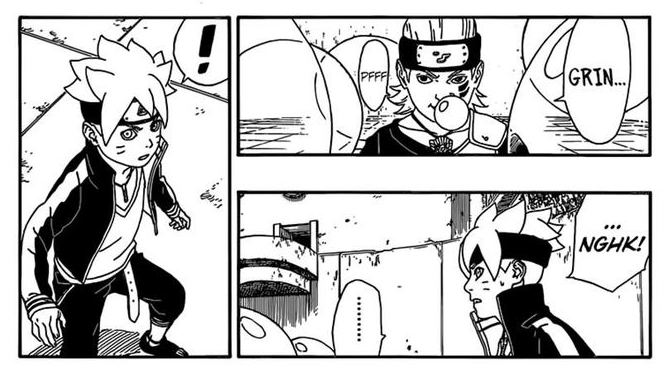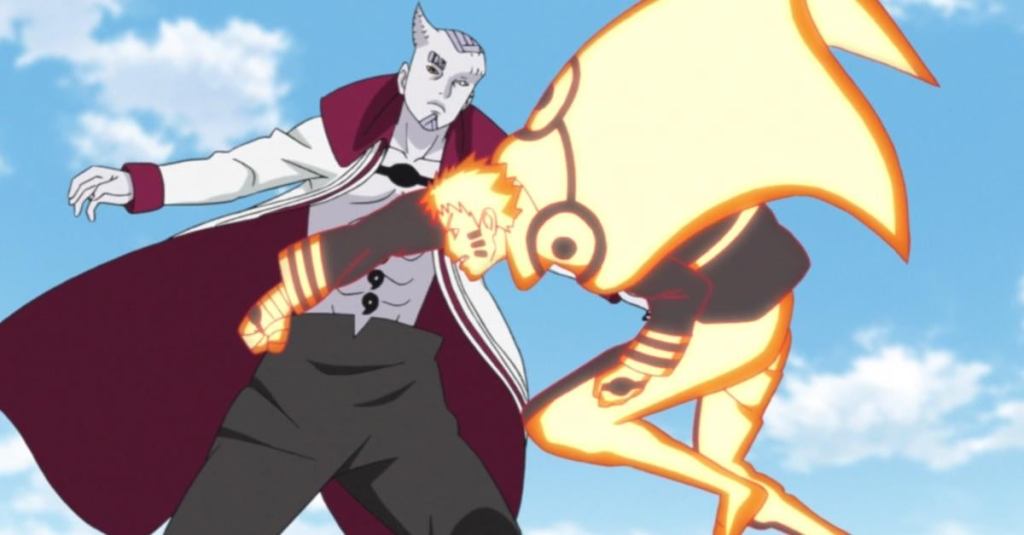Fraud, phony, con-man, hack: all these words and more could be used to describe a Naruto journalist who hasn’t done the work of reading Boruto. And what’s worse, donning my best Nathan Fielder impression, is that they once could also describe me. With Boruto‘s second season on the way, that had to change. Granted, it’s not so bad: Naruto diehards (like I was) have all sorts of justifications for avoiding the controversial follow-up; some don’t even see Boruto as canon, since Naruto creator Kishimoto largely took a backseat role, especially early on.
Videos by ComicBook.com
In hindsight, I went embarrassingly long without reading Naruto’s infamous spin-off, simply because I could: Naruto is self-contained enough that you can talk about it without ever touching Boruto—and the fan base gave me plenty of reasons to avoid touching Boruto. But see, anime journalism is a tricky game. You always have to be on top of constantly changing trends; you have to keep up with the times. I finally took the leap and read Boruto so I could write authoritatively on it, and I came out the other end something I never expected to be: a Boruto fan. Here’s why.
Cards on the Table: Boruto Has Some Problems…

There are caveats and problems that should probably be addressed right off the bat. First, I’m taking the perspective of somebody who has read the manga, not watched the anime. There’s a reason for that. I’ve watched a handful of major fights from Boruto, and something about the animation is super off-putting compared to ’02 Naruto and Shippuden. Naturally, I also can’t speak for Boruto’s filler; some say it adds a lot, while others hate it. I love Naruto’s filler, but when it comes to Boruto, I have no dog in the fight and don’t want to give the impression I do.
I also have trouble discerning how much of the uncanny feeling of Boruto’s anime comes down to a bad adaptation versus bad source material, because the fandom-speak about Boruto having bad art is true. It’s not so much that the art itself is bad—Ikemoto tries his best to earn his paycheck. But Boruto has enacted some miraculous paradox: its slowest moments, where Ikemoto locks in and depicts full backgrounds and expressive characters, are leagues more exciting than its hypest fights.
Ikemoto almost seems too intimidated to draw decisively when the pressure to perform for the battle-hungry shonen readership is on. The lack of confidence leads to big problems. Even seemingly minor decisions like the choice of perspective can be baffling. To illustrate: there’s a moment in Two Blue Vortex where Sarada, Sasuke’s daughter, uses Chidori at the same time as a Chidori-wielding enemy. For some reason, this is shown from the side at a few paces’ distance, with their bodies seeming to slip past one another. This one decision of composition and perspective yields a sequence of several panels that are just unnecessarily confusing.
Similarly, here’s a fun fact: I actually haven’t been a big manga reader until recently, or at least not the kind who pays a lot of attention to technical details. Boruto is the story that taught me the critical importance of good paneling just by having such unspeakably dry paneling: rectangles after unornamented rectangles (see above), only occasionally switching to cookie-cutter parallelograms during fights. Paneling is crucial because it has a disproportionate effect on what it’s like to read a given manga: creative paneling naturally guides the eyes from one place on the page to another, but a sea of indistinct rectangles exponentially raises the mental bandwidth demanded of readers.
Boruto Is Still Better Than You Think

These general problems of manga storytelling pervade Boruto, and it’s a shame because Boruto’s kernel is actually a lot better than fans make it out to be. Let’s address the elephant in the room: Naruto’s Ohtsutsuki twist is controversial among Naruto fans even to this day, and I’ll be the first to admit I don’t love it. In my opinion, it’s one of the pivotal moments where Naruto sabotages itself. From its humble beginnings as an action comedy with slice-of-life components to its post-time-skip laser focus on Naruto and Sasuke to its sudden fatalistic sci-fi bent near its end, Naruto always struggled to keep its own identity straight.
So, holding it in contrast to that, the thing that ultimately got me to love Boruto is the way it stands by itself. Because of its confident storytelling, everything that seems odious about it starts to work in the strangest, most satisfying way. By Boruto: Naruto Next Generations’ end, I had even become pretty fond of the Ohtsutsuki as enemies—Momoshiki even became a problematic fave. In stark opposition to Kaguya’s overwhelming presence and one-note personality, turning the Ohtsutsuki into an all-out alien invasion—who by necessity have to be beatable for the story to continue—allowed for them to develop diverse personalities.
I avoided Boruto specifically because I was so repelled by its doubling down on sci-fi elements, but it’s precisely because it doubles down that it works. Most Naruto fans have heard of Boruto‘s “gimmicks” like scientific ninja tools and unrestrained chakra absorption. But what Boruto haters fail to mention is that these actually work to the story’s benefit, not detriment.
Thanks to its sci-fi developments and its singular focus on the Ohtsutsuki and their plan to harvest the planet’s chakra, the combat and core conflict in Boruto stay relatively fixed. On top of that, Boruto builds its story out. It works because Boruto isn’t primarily a story about the battles, despite there being plenty of battles. It’s a story about Boruto, the village where he lives, and the relationships he has, threads it remains on with impossible precision that surpasses its predecessor.
Naruto Fans Owe It To Themselves To Try Boruto

I already have trouble with following combat in manga, even without Ikemoto’s visual diarrhea. As mentioned, I’d watch the animated fights on YouTube, just to be sure I understood. One comment I saw stuck with me: “This feels nothing like Naruto.” It was meant as an insult, but as I pushed through Naruto Next Generations and Two Blue Vortex, it became clear that it’s a compliment. Boruto isn’t meant to feel like Naruto. It’s meant to feel like Boruto. As the Boruto protagonist first said, this is his story.
Boruto purposely dials things to the most extreme and even laughs at its own contrivances sometimes, but what sold me (even well before Two Blue Vortex, which many Boruto fans see as its inflection point in terms of quality) was how eloquently it uses that as the foundation for truly compelling characters and situations.
Boruto has a great idea at its core. Naruto’s whole shtick was this feeling that he’s destined for greatness; Boruto, by contrast, feels utterly condemned to greatness. His dynamic with Kawaki never feels contrived despite the pair being a direct parallel to Naruto and Sasuke—the pair even take up the opposite mentors you’d expect, with Kawaki taking to Naruto as Boruto is taught by Sasuke. The village he inhabits, which his father leads as Hokage, feels more fleshed out and alive than it did in Shippuden. Although fans frequently trash how Boruto treats its older generation of shinobi, those who are prominently featured make sense in their roles while staying out of the way for Boruto’s own cast to shine.
By no means is Boruto a perfect story. In fact, there’s much to be said about its execution. But for Naruto fans, there’s a lot to gain from engaging with it. Naruto fans won’t map perfectly onto Boruto fans, and vice versa; the two stories do totally different things. I’d even say Boruto suffers most where it tries to be too much like Naruto. But Boruto is tightly written, with pointed relationships and a sense of clarity every Naruto fan will savor. If you stop looking at Boruto as Naruto 2: the Squeakquel and take it on its own merits, Boruto scratches the Naruto itch while giving closure by fixing one of Naruto‘s longest-standing problems: coherence.
My aim here was to maybe convince some fence-sitters to give Boruto a shot, so if I’ve convinced you (or if you just want to talk about the finer details here), leave a comment or find me on X (@KoltDay). If you’re still on the fence, though, maybe you’ll be convinced seeing your favorite Naruto characters in Boruto: click through on the (mostly) spoiler-free list below!









